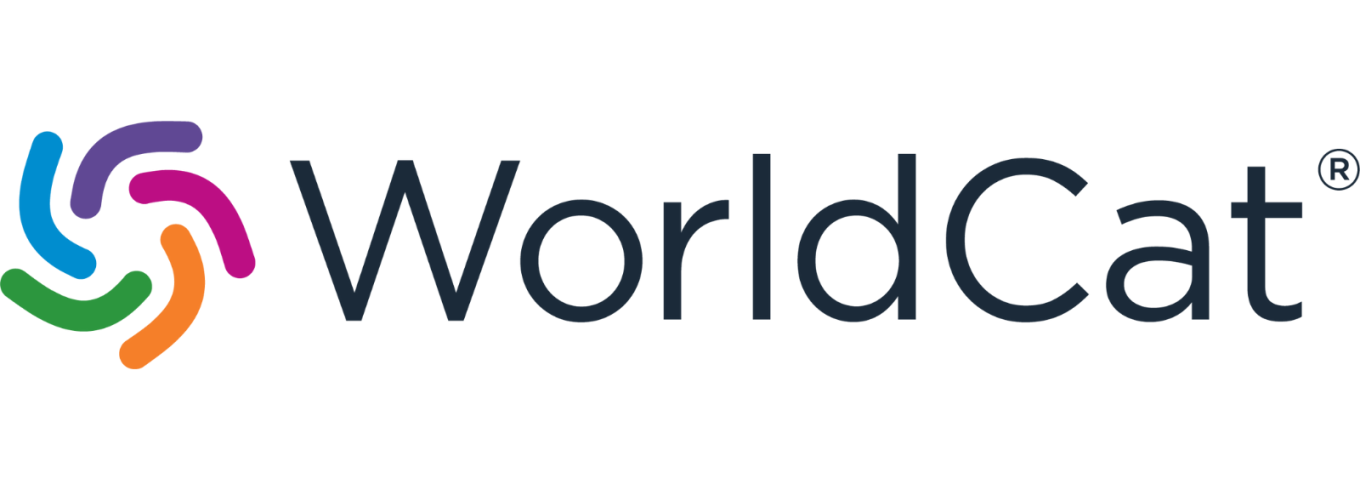Opportunities and Challenges to Afghanistan's Self-sufficiency in Livestock Production Sector
DOI:
https://doi.org/10.62810/jnsr.v3i2.224Keywords:
Afghanistan, Challenges, Livestock products, Opportunities, Self-sufficiencyAbstract
Afghanistan is an agricultural country where livestock is the main source of income for most of the people. Although hundreds of thousands of metric tons of livestock products are produced, large amounts of animal products are still imported to the country. Therefore, a cross-sectional study was conducted to identify the opportunities and challenges confronting Afghanistan's self-sufficiency in livestock products. The data were collected from 48 key professionals by semi-structured interviews using a pre-designed questionnaire. More than 52% of the respondents hold bachelor's/DVM degrees, while the rest have master's (35.4%) and PhD (12.5%) degrees in veterinary (72.1%) and animal science (27.9%) fields. About 80% of the respondents believed that Afghanistan has sufficient capacity to become self-sufficient in the animal products sector. At the same time, only half of them thought that Afghanistan is moving on the right track towards self-sufficiency in animal production. Destruction of pastures (95.7% ), neighboring countries' interventions in the market (95.1%) and importation of low-quality animal products (89.4%), insufficient scientific research projects (84.8%) and funds (84.5%) in the animal health and production sector, lack of proper packaging (87.2%) and suitable domestic market (80%) for animal products, traditional husbandry system (83.3%), shortage of concentrated feeds (78.3%) and excessive paperwork for the investors (69.6%) are the main challenges in front of self-sufficiency in animal products. The results of this study could help policymakers prioritize the animal health and production sector and adjust existing policies regarding animal products to meet the country's needs and accepted standards.
Downloads
References
Abu Hatab, A., Cavinato, M. E. R. and Lagerkvist, C. J. )2019(. Urbanization, livestock systems and food security in developing countries: A systematic review of the literature. Food Security, 11(2), pp.279-299.https://doi.org/10.1007/s12571-019-00906-1 DOI: https://doi.org/10.1007/s12571-019-00906-1
Azine, P. C., Mugumaarhahama, Y., Mutwedu, V. B., Baenyi, S. P., Kunde, E. A., Mwanga, J. C. I. M., Bacigale, S.B., Karume, K. and Ayagirwe, R.B.B. )2025(. Livestock feeding practices in South Kivu, Eastern Democratic Republic of Congo: challenges and opportunities. Discover Animals, 2(1), p.8. https://doi.org/10.21203/rs.3.rs-4790505/v1 DOI: https://doi.org/10.1007/s44338-025-00053-2
Berkhout, N .(2021). Afghanistan nearing self-sufficiency in chicken meat - Poultry World. https://www.poultryworld.net/poultry/afghanistan-nearing-self-sufficiency-in-chicken-meat/ (Accessed: 5 April 2025).
Chakraborty, S., Kumar, A., Tiwari, R., Rahal, A., Malik, Y., Dhama, K., Pal, A. and Prasad, M. (2014). Advances in diagnosis of respiratory diseases of small ruminants. Veterinary medicine international, 2014(1), p.508304.. https://doi.org/10.1155/2014/508304. DOI: https://doi.org/10.1155/2014/508304
Cheng, M., McCarl, B. and Fei, C. (2022). Climate change and livestock production: a literature review. Atmosphere, 13(1), p.140. https://doi.org/10.3390/atmos13010140 DOI: https://doi.org/10.3390/atmos13010140
Dastagiri, M. B. (2003). Is India Self-Sufficient in Livestock Food Products?. Indian Journal of Agricultural Economics, 58(4), pp.729-741. Link
Duong, M. P. T., Sari, N.P.W.P., Mazenda, A., Nguyen, M.H. and Vuong, Q.H. (2024). Improving the market for household livestock production to alleviate food insecurity in the Philippines. Animal Production Science, 64(7). https://doi.org/10.1071/AN23349. DOI: https://doi.org/10.1071/AN23349
Enriquez, J. P. (2020). Food self-sufficiency: Opportunities and challenges for the current food system. Biomedical Journal of Scientific & Technical Research, 31(2), pp.23984-23989. https://doi.org/10.26717/bjstr.2020.31.005061. DOI: https://doi.org/10.26717/BJSTR.2020.31.005061
FAO (2011). ‘Mapping supply and demand for animal-source foods to 2030, by T.P. Robinson & F. Pozzi’, Animal Production and Health Working Paper. No. 2, p. 154. Link
FAO (2023). ‘Cold wave assessment on livestock Data in Emergencies Impact report July 2023’, Data in Emergencies Impact report, pp. 1–40. Link
FAO (2008). Afghanistan National Livestock Census 2002-2003. OSRO/AFG/212/AFG Final Report, Food and Agriculture Organization of the United Nations, Rome, 2008. ISBN 978-92-5-105950-0. Link
Godde, C. M., Mason-D’Croz, D., Mayberry, D. E., Thornton, P. K. and Herrero, M. (2021). Impacts of climate change on the livestock food supply chain; a review of the evidence. Global food security, 28, p.100488. https://doi.org/10.1016/j.gfs.2020.100488. DOI: https://doi.org/10.1016/j.gfs.2020.100488
Grace, D., Bett, B., Lindahl, J. and Robinson, T. (2015). Climate and livestock disease: assessing the vulnerability of agricultural systems to livestock pests under climate change scenarios. Consultative Group on International Agricultural Research Program on Climate Change, Agriculture and Food Security, Copenhagen), Climate Change Agricultural and Food Security Working Paper, (116). Link
Habib-ur-Rahman, M., Ahmad, A., Raza, A., Hasnain, M. U., Alharby, H. F., Alzahrani, Y. M., Bamagoos, A. A., Hakeem, K. R., Ahmad, S., Nasim, W. and Ali, S. (2022). Impact of climate change on agricultural production; Issues, challenges, and opportunities in Asia. Frontiers in Plant Science, 13, p.925548. Link DOI: https://doi.org/10.3389/fpls.2022.925548
Hegde, N. G. (2020). Goat development: an opportunity to strengthen rural economy in Asia and Africa. Asian Journal of Research in Animal and Veterinary Sciences. https://doi.org/10.9734/ajravs/2020/v3i2107 DOI: https://doi.org/10.9734/ajravs/2020/v3i2107
Hubbart, J. A., Blake, N., Holásková, I., Mata Padrino, D., Walker, M. and Wilson, M. (2023). Challenges in sustainable beef cattle production: a subset of needed advancements. Challenges, 14(1), 14. https://doi.org/10.3390/challe14010014. DOI: https://doi.org/10.3390/challe14010014
Li, Y., Sun, Z. and Accatino, F. (2021). Spatial distribution and driving factors determining local food and feed self‐sufficiency in the eastern regions of China. Food and Energy Security, 10(3), 296. https://doi.org/https://doi.org/10.1002/fes3.296. DOI: https://doi.org/10.1002/fes3.296
Magiri, R., Muzandu, K., Gitau, G., Choongo, K. and Iji, P. (2020). Impact of climate change on animal health, emerging and re-emerging diseases in Africa. African handbook of climate change adaptation, pp.1-18. https://doi.org/10.1007/9 DOI: https://doi.org/10.1007/978-3-030-42091-8_19-1
Manyike, J. Z., Taruvinga, A. and Zhou, L. (2025). Factors influencing livestock ownership and herd intensity among smallholder farmers in the Eastern Cape, South Africa. Heliyon, 11(2). https://doi:10.1016/j.heliyon.2025.e41787 DOI: https://doi.org/10.1016/j.heliyon.2025.e41787
McMahon, A. (2008). Case study of poultry and grape/raisin subsectors in Afghanistan. Guided case studies in value chain development for conflict-affected environments. microREPORT, 106. Link
Mekonnen, N. (2018). The Impact of Climatic Change on Animal Disease Ecology, Distribution and Emergence: A Review. Archives of Applied Science Research, 10(1), pp.14-20. Link
Moran, D. and Blair, K. J. (2021). Review: sustainable livestock systems: anticipating demand-side challenges. Animal 15: 100288 [online], https://doi.org/10.1016/j.animal.2021.100288 DOI: https://doi.org/10.1016/j.animal.2021.100288
Muhammad, S. A., Rauf, A., Ali, H. and Awais, M. (2023). Impact of Climate Change on Animal Health. One Health Triad, Unique Scientific Publishers, Faisalabad, Pakistan, 1, pp.8-13. https://doi.org/10.47278/book.oht/2023.02 DOI: https://doi.org/10.47278/book.oht/2023.02
Nair, M. R., Sejian, V., Silpa, M. V., Fonsêca, V. F. C., de Melo Costa, C.C., Devaraj, C., Krishnan, G., Bagath, M., Nameer, P.O. and Bhatta, R. (2021). Goat as the ideal climate-resilient animal model in tropical environment: revisiting advantages over other livestock species. International Journal of Biometeorology, 65, pp.2229-2240. https://doi.org/10.1007/S00484-021-02179-W. DOI: https://doi.org/10.1007/s00484-021-02179-w
NSIA (2024) ‘Afghanistan Statistical Yearbook 2023 - 2024’, N 45, July 2024, Link
Our World in Data (2025). Animal Production and statistics, Link
Sahab, M. N., Mirzad, A. N., Miakhil, A. and Amin, M. A., (2020). Investigation of poultry diseases outbreak in different seasons in Shulgara district of Balkh province. International Journal of Advanced Academic Studies, 2(4), pp.85-88. Link DOI: https://doi.org/10.33545/27068919.2020.v2.i4b.335
Samadi, A. and Zadran, N. (2023). Evaluation of Practiced Biosecurity Measures in Selected Broiler Farms across Kabul Province, Afghanistan. Journal of Advanced Veterinary Research, 13(2), pp.246-251. Link
Samadi, A. (2024). Impacts of Climate Change on Vector-Borne Diseases of Animals and Humans with Special Emphasis on Afghanistan: A Review. Journal of Natural Science Review, 2(1), pp.1-20. https://doi.org/10.62810/jnsr.v2i1.35. DOI: https://doi.org/10.62810/jnsr.v2i1.35
Samadi, A., Amiri, M., Abi, A. J., Hakim, H., Alizada, M. N., Sangary, M. and Rahpaya, S.S., (2021). A survey of tick infestation of animals before Eid-al-Adha as suspected cases of Crimean-Congo Hemorrhagic Fever (CCHF) in Kabul city’s streets and live animal markets. Veterinary Medicine and Public Health Journal (VMPH), 2(2), pp.57-63. https://doi.org/10.31559/vmph2021.2.2.5. DOI: https://doi.org/10.31559/vmph2021.2.2.5
Samadi, A., Faizi, N., Abi, A. J., Irshad, A. R. and Hailat, N. (2019). Prevalence and pathological features of ovine lungworm infection in slaughtered animals in Nangarhar Province of Afghanistan. Comparative Clinical Pathology, 28, pp.1667-1673. https://doi.org/10.1007/S00580-019-02996-X/METRICS. DOI: https://doi.org/10.1007/s00580-019-02996-x
Sundram, P. (2023). Food security in ASEAN: progress, challenges and future. Frontiers in Sustainable Food Systems, 7, p.1260619. https://doi.org/10.3389/fsufs.2023.1260619. DOI: https://doi.org/10.3389/fsufs.2023.1260619
TOLOnews (2025). Over one Billion Dollars Invested in Afghanistan’s Poultry Sector | TOLOnews. Link
UNDP (2024). "Approximately 85 percent of Afghans live on less than one dollar a day." Supporting the Afghan people in their pursuit of peace and prosperity, January 10, 2024, Link
World Bank Group (2023). Updating Poverty in Afghanistan Using the SWIFT-Plus Methodology. Link
Worldometer (2025). Afghanistan Population. Link
Downloads
Published
How to Cite
Issue
Section
License
Copyright (c) 2025 Assadullah Samadi

This work is licensed under a Creative Commons Attribution-NonCommercial 4.0 International License.



























